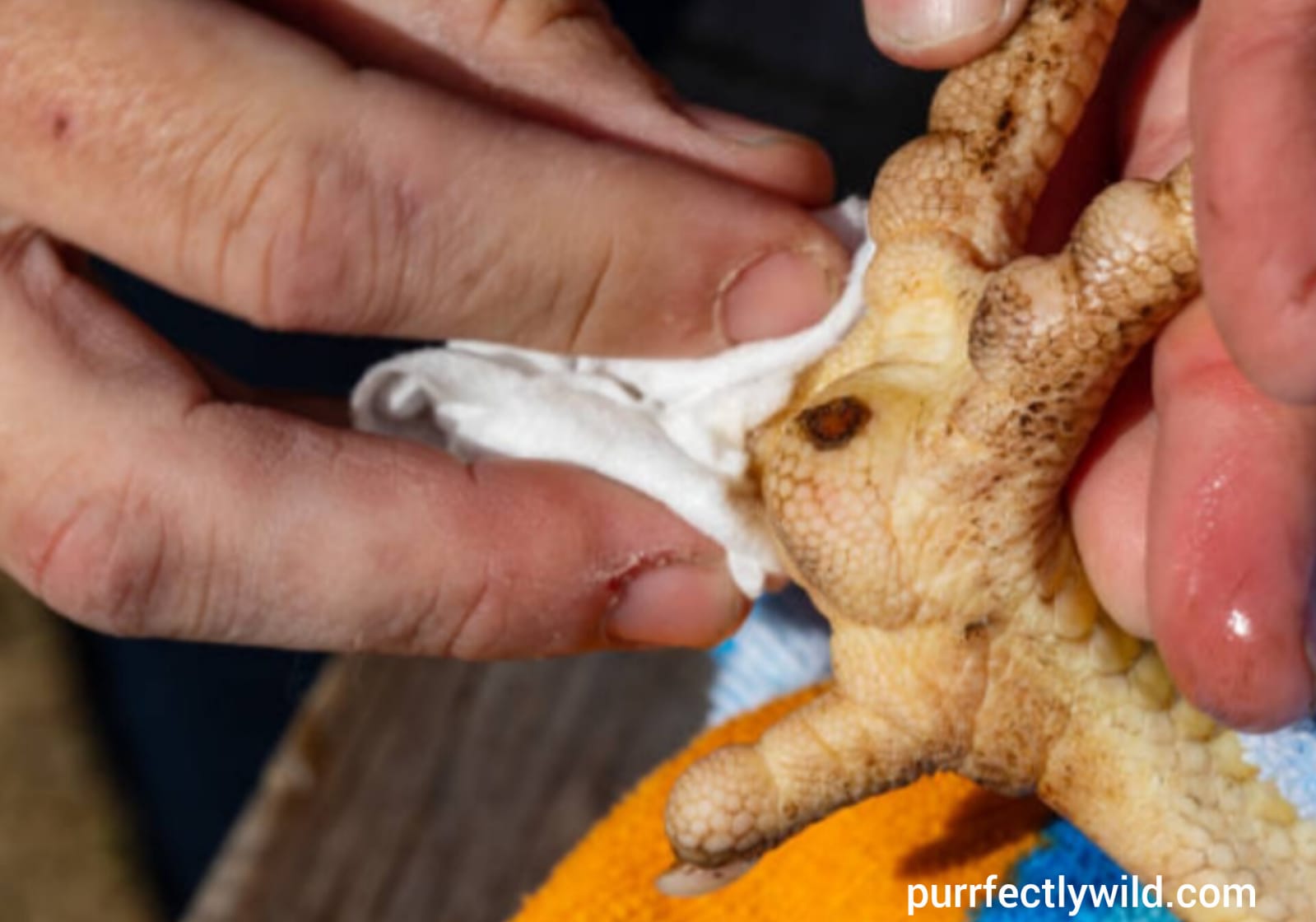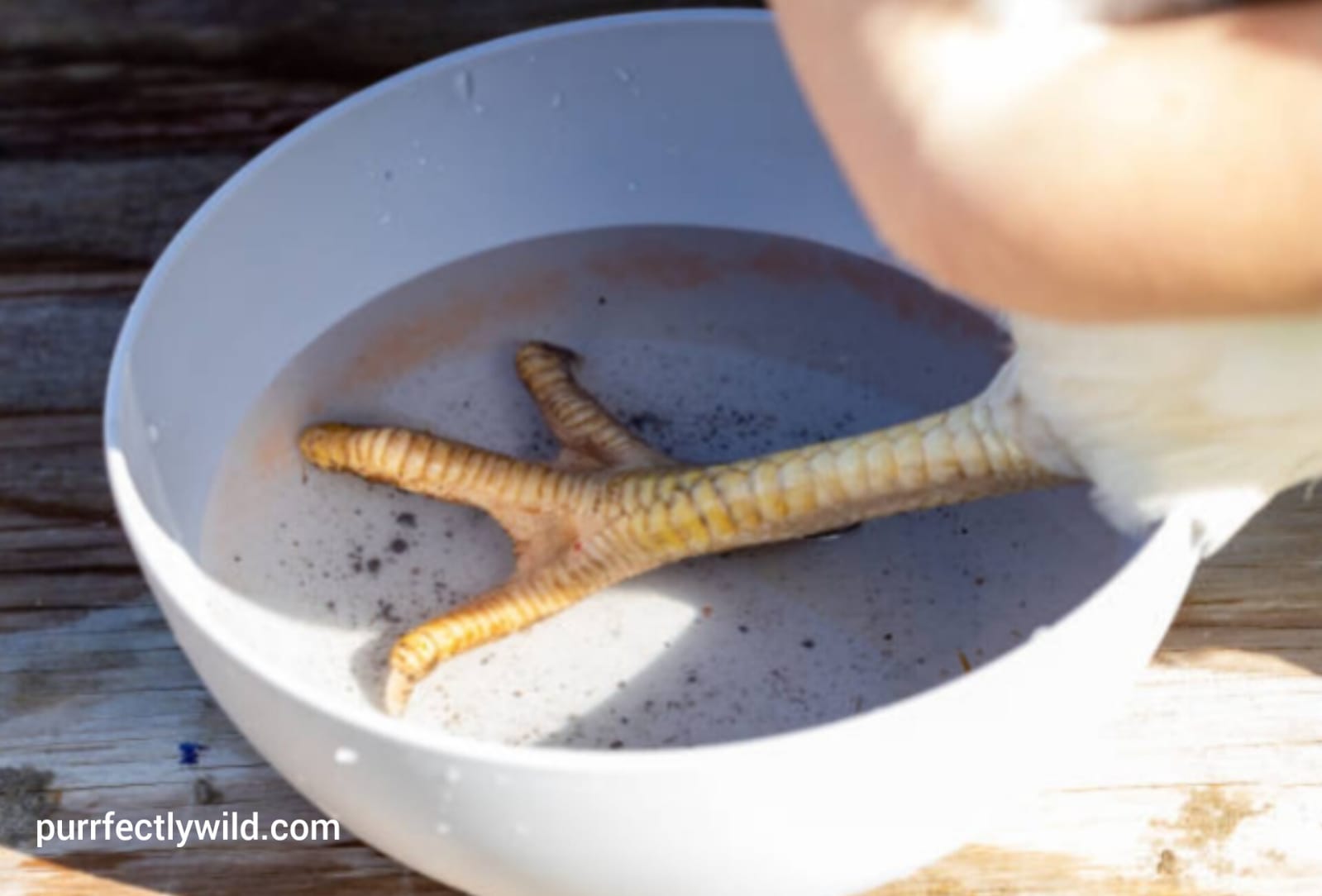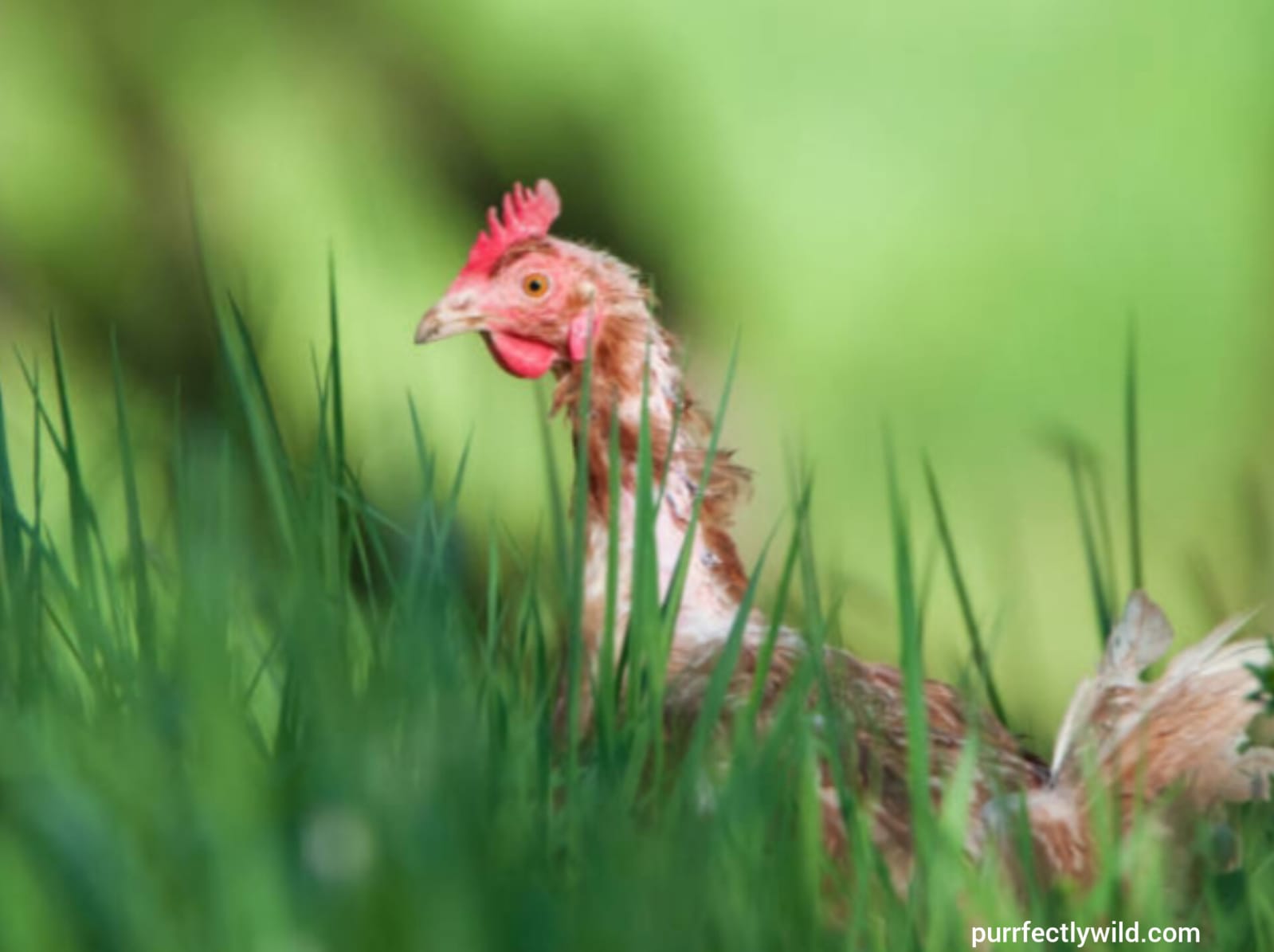Foot Injury in Chicken ( Bumblefoot )
Bumblefoot in chickens
Chickens’ feet are shockingly delicate and are effectively harmed.
Chickens utilize their feet a ton – even an extreme foot injury is probably not going to totally prevent a chicken from rummaging and perching – and their feet mend gradually, so minor foot wounds in chickens frequently form into additional difficult issues like bumblefoot.

Bumblefoot is a typical issue in terrace chickens, particularly more seasoned hens. It very well may be effortlessly treated. In any case, assuming bumblefoot is neglected or disregarded, it can cause enduring harm and even demise.
Perceiving bumblefoot
The side effects of bumblefoot are equivalent to any foot injury:
Limping or leaning toward a leg
Diminished movement
Not utilizing a leg by any means
An enlarged footpad or toe
A sensitive foot or footpad
So how might you let know if a foot or leg injury is bumblefoot?
Bumblefoot is typically perceived by a dark or earthy colored scab, expanding or potentially discharge filled abscesses. It is most normal on the foot cushion yet can happen on the toes or on top of the foot.
In the event that you have a chicken showing the side effects of a foot injury, you should look at the foot for indications of bumblefoot.

It is critical to look at and treat any foot injury in chickens, as wounds that become tainted or don’t recuperate as expected are the most widely recognized reason for bumblefoot.
Reasons for bumblefoot in chickens
Bumblefoot is a contamination brought about by microorganisms. It is generally the consequence of some kind of injury to the foot, for example, a cut, scratch, brush, cut or even an injury, that then, at that point, becomes tainted. Since chickens are very tough, the underlying injury frequently isn’t seen and the uncovered injury then, at that point, contracts bumblefoot.
Foot wounds that lead to bumblefoot are frequently brought about by:
Stepping on something sharp, like security fencing or an old nail
Unpleasant or sharp surfaces in the chicken run, like rock or cement
Bouncing down from settling boxes or perches that are excessively high
Perches that are excessively little or too hard to even consider getting a handle on (for example excessively little, entirely round, produced using a dangerous material like metal or plastic)
Splinters from unpleasant perches, or wood bedding, for example, sawdust or wood chip
Bumblefoot is bound to happen when chickens are strolling around on wet or messy sheet material. Chilly climate, corpulence and unfortunate sustenance, specifically abstains from food high in sugars and low in protein, additionally add to this illness
Preventing bumblefoot
Likewise with every single chicken disease, counteraction is superior to a fix. Forestalling bumblefoot, in any case, isn’t that simple all the time.
The most ideal avoidance is treating all foot wounds with the goal that they don’t become contaminated. This, obviously, requires close perception of your birds and really taking a look at their feet for issues consistently. On the off chance that a foot injury is identified, it ought to be painstakingly cleaned and treated with Vetericyn In addition to forestall contamination and help the would mend. It ought to be wrapped, to prevent any microbes from entering, and changed with Vetericyn, consistently.

Great coop the board and chicken consideration additionally help forestall bumblefoot. For instance:
- Never result in sharp articles that could harm birds’ feet lying around
- Feed chickens a decent and nutritious eating regimen
- Try not to give chickens an excessive number of scraps, starches or fat to forestall heftiness (it works out!)
- Guaranteeing the perches you give are smooth however not dangerous, and that chickens don’t have too large a leap down from them, will likewise help. Ideal perches ought to be something like 5 cm wide, and perches that are level or semi-straightened are superior to completely cycle ones
Treating bumblefoot
Step 1: Wash Your Hands
As of late, we’ve gleaned tons of useful knowledge about how microbes spread. To forestall new or further disease to your chicken or you, ensure you clean up when treatment.
Step 2: Stop Bleeding
At the point when you have found an injured chicken, evaluating the harm and clean the area is significant. In any case, you should stop any dynamic draining first. A few injuries, similar to brushes, waddles, and toenails, will drain definitely more than others. I use Kwik Stop to stop the draining however any styptic powder will work. In the event that you have no styptic powder in your chicken medical aid unit, you can definitely relax! Cornstarch or baking flour fills in as a decent other option. Sprinkle the powder over the area and press it into the purpose in dying. Permit time for it to clump and dry prior to cleaning the injury.
Step 3: Clean the Wound
Cleaning the injury and encompassing region is significant for both forestalling and recuperating contaminations. On the off chance that you do nothing else, don’t skirt this significant stage. It’s everything thing you can manage to assist a chicken with a surface physical issue.
It’s anything but a totally regular item, however a past cleanser and warm water flush with exemplary Sunrise Dish Cleanser is my initial phase in injury cleaning. It is protected and delicate, and for little surface injuries you can essentially utilize it with a washcloth. For bigger pieces, I flush the region solidly in the sink, while being mindful so as not to get the chicken totally doused. You would rather not give them a full shower and worry them. Simply get them sufficiently wet to clean the soil and microbes from the injury.
Step 4: Apply a Topical Treatment
There are bunches of good skin wound medicines that are ok for use on chickens. Here are my top suggestions for this step:
Veterycin –
Veterycin is my main go-to item for wound care and cleaning. It dispenses with 99.9% of microorganisms. Veterycin is unbelievably protected and has astounding cleaning and mending properties. It tends to be utilized for essentially anything, anyplace on the body. Veterycin is promptly accessible for buy all things considered pet or feed stores, as well as on the web. What’s more, don’t stress over which equation to purchase; while they make numerous species explicit marks, all Vetericyn In addition to items are protected to utilize. Liberally splash nearby the injury. Rehash day to day all through recuperating.
Crude Honey –
We like to incline normal in Chickenlandia whenever the situation allows. Crude Honey has incredible antibacterial properties. It additionally assists things with mending up quicker. Any Crude honey will do. Drop on a glob and delicately spread it across the injury. Ensure your chicken is isolated from their herd while utilizing honey topically.
Hydrogen Peroxide –
Many individuals have this promptly accessible in their home medical aid unit. It is a gentle sterile utilized on the skin to forestall contamination. You can involve this on chickens for minor cuts, scratches, and consumes. Be that as it may, peroxide ought not be utilized on stabbings or chomps. I apply it to the injury region with a cotton ball.
Neosporin – Practically everybody has a container of Neosporin around the house. However long it has no pain reliever in it, utilizing on a chicken wound is completely protected. Since it’s a triple anti-toxin, it can assist with forestalling or treat disease during a crucial time. Essentially slather it on minor injuries and focus on it tenderly.
Blue Kote – Blue Kote is another of my go-to items. It is a clean, microorganism killing, fungicidal injury dressing and mending help. It attempts to safeguard creatures against normal diseases and discharge delivering microbes. Blue Kote is for surface injuries and scraped areas, but at the same time is compelling for contagious diseases and ringworm. Blue Kote contains Gentian Violet, which is a sterile color that colors the region a dull blue tone. This color is extremely useful for “concealing” an injury and keeping picking from their herd mates. Whenever I notice a bird with an injury that is being picked, I apply a splash of Blue Kote to the area (be cautious, it WILL color your hands blue for a couple of days and it smudges garments).
Step 5: Repeat
Contingent upon the seriousness of the injury, you will probably need to rehash the cleaning and skin treatment process for however many days as required. For bigger injuries we should treat 2x every day for the initial 3 days and afterward once per day until they are recuperating.


